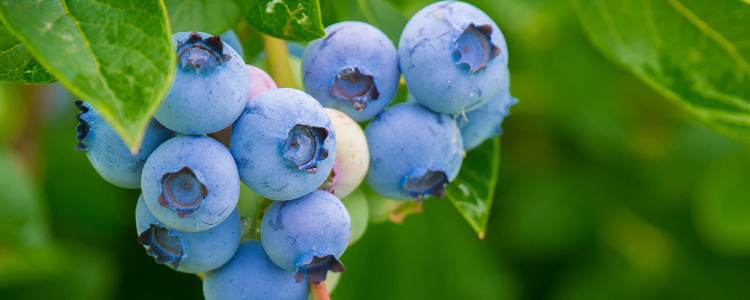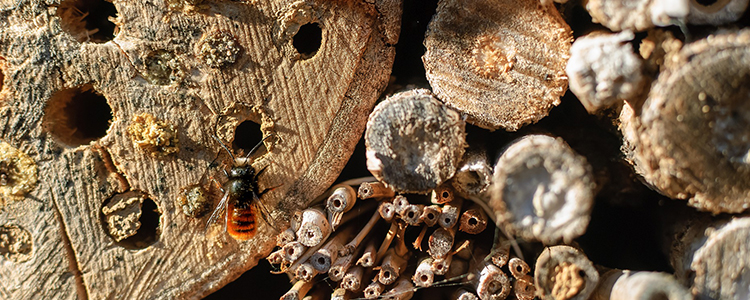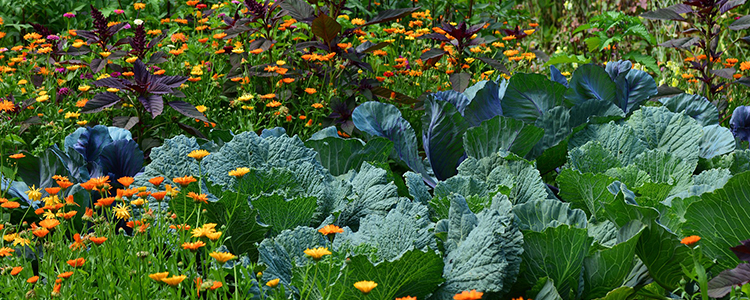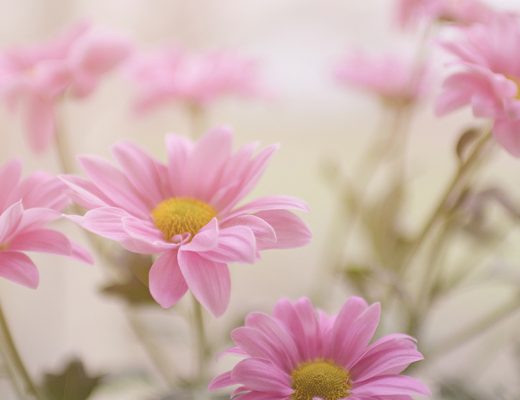Bees are important because they produce honey – this is something that everyone knows and agrees upon. But there’s more to it. While it is true that we should always be grateful for being spoiled by honeybees with this sweet golden delight. We should focus on lending a helping hand to native bees. Honeybees get plenty of help from beekeepers and their issues are closely monitored. Unfortunately, the problems that native bees face tend to go unnoticed.
As mentioned above, native bees are great pollinators. They are, in fact, two to three times better at pollinating plants than honeybees. It is safe to say that they have great environmental importance. Unfortunately, they are in danger of becoming extinct. This is a big problem as the quality of our crops rely on both farmed and wild bees. We can go as far as to say that our food security depends on these friendly insects. But we have good news as well – there are many ways in which we can help our native bees.
Let’s dive into article to find out which native bees live in your area. We will also give you some tips on how to make your backyard more bee-friendly.
What Are Native Bees?
Native bees are bees that occur naturally in a certain region. In Australia, there are over 1,700 species of native bees, but only a few have been investigated. They come in many different shapes, sizes, and colours. Native bees can be metallic green, red, black, yellow, or patterned. Their bodies can be shiny and sleek or round and fuzzy. Most Australian native bees are solitary and are generally less aggressive than honeybees.

Why Are Native Bees Important?
Native bees and the native flora and fauna have evolved simultaneously and, thus, depend on one another. As a result, Australian native bees are an essential part of the diverse and unique Australian ecosystems. In fact, many species depend on them.
Studies have found that native bees are more effective pollinators than European honey bees. In addition, they have a special ability called buzz pollination. This is a type of pollination that uses vibrations to collect and displace pollen. Buzz pollination is essential for the production of certain fruits including kiwi, tomato, blueberry, and eggplant.
So, to put it simply, native bees can pollinate native plants successfully and, in some cases, even introduced plant species. They are more effective, less aggressive, and less invasive than European honeybees. This makes them indispensable members of the Australian bush.
Examples of Australian Native Bees
There are hundreds or even thousands of native bees that benefit from the biodiversity of the Australian continent. Native bees thrive in all types of environments from tropical rainforests. From dry and hot deserts, and snowy mountains to more domestic settings such as gardens and backyards. There are many Australian native bees out there, and we are only familiar with a handful of them .If your garden is bee-friendly, maybe you’ll come across a less known type of bee. But first, let’s take a look at the most common ones.
The most common Australian native bees are reed bees, leafcutter bees, resin bees, Homalictus bees, and masked bees. Blue-banded bees and teddy bear bees are also very common but they are not endemic to Tasmania. Stingless bees and yellow and black carpenter bees are common in Queensland, New South Wales, Western Australia, and Northern Territory. And last but not least, green carpenter bees are common in Queensland, New South Wales, and South Australia.
Is It a Native Bee?
When the word bee comes up we always think of a fuzzy insect that has black and yellow stripes. However, the aforementioned native bees have vibrant colouring and can look similar to other insects such as flies or wasps.
If we want to be able to help our native bees we must tell them apart from European honeybees. Native bees can be black, dark brown, metallic blue or green, striped, or even spotted. It’s always a good idea to do some research and to check whether you’re looking at a native bee.
Another important characteristic of native bees is their solitary nature. Although we are used to thinking that bees live in hives, only a few of them do. Honeybees live in hives and form colonies and spend their lifecycles working and living as a group. They are known as social bees. For axample stingless bees belong to the social bees category. Australian native bees will only get together to mate and then resume return to their solitary life. The females lay eggs in nests built just for this purpose. Once their offsprings emerge, they separate from the mother bees and repeat the cycle. However, the vast majority of native bees lead solitary lifestyles.

What Can We Do to Help Native Bees?
The easiest way to help native bees is to create a friendly environment for them in your outdoor area. Australia has a wide variety of Native Bees. Therefore, your garden will become a home for these amazing insects. Especially once you make a few small changes and improvements.
If you already have a garden, check whether the majority of your plants are native or not. Native bees need native plants. Therefore, if your garden is filled with plants that aren’t native, it might be time to make some changes. Native plants tend to attract native pollinators. Native plants will also prove to be hardy and low-maintenance. This is because they are fully adapted to the growing conditions found in the area.
To make your garden more native bee-friendly, choose native plants that produce colourful flowers. Diversity is key because there are many different species of native bees endemic to each region. So, to keep all of them happy, transform your garden into a native wildflower paradise. Not convinced? Check out these beautiful wildflower bouquets.
Another important aspect that’s worth considering is ensuring you have plants with different blooming periods. Ideally, your garden will have flowers throughout Spring, Summer, and Fall. Some species of native bees are only active in spring. Some in summer, and others are active all year round. Therefore it’s important to have some blooms available for each of them.

What Flowering Plants Do Native Bees Love?
Native bees like colourful native plants. Certain plants will act as native bee magnets. Here are some examples:
Daisies
Daisies are an attractive plant, and are sort after by pollinators. They produce shallow blooms that are easily accessible. In addition to that, their blooming period is quite long. If your outdoor area is small, daisies are a great option because they are low-growing shrubs that can fit anywhere. There are two native species of daisies. The Everlasting Daisy Bracteantha and the Cut Leaf Daisy Brachyscome. These flowers are are very popular with native bees. Other exotic species such as Seaside Daisy Erigeron or the African Daisy Osteospermum will also do the trick. Gerbera Daisies’s attract native bees and butterflies. Gerbera’s can also make for a great gift for a loved one.
Buddleja Butterfly Bush
We all know that this native shrub is very popular with butterflies, as the name suggests,. The good news is that bees love it as well. If you add a butterfly bush to your garden, you’ll be providing nutrition for all native pollinators. Your garden will be teeming with life. If you a busy bee yourself, the butterfly bush is a perfect option. It is a tough and hardy flowering shrub that won’t require a lot of work on your part. You can also find climbing varieties of buddleia and fast-growing ones that will grow into trees. You can find buddleias pretty much everywhere as they grow in all types of environments. However, if you can’t spot them in the wild, you’ll surely find some in your local plant nurseries.
Gum Trees
Angophora and eucalyptus produce prolific blooms. These are an important food source for a wide range of native bees. Whenever gumtrees are in bloom, pollinators love their flowers. So much so that they almost forget about other blooming plants in the surrounding area. If you plant a gum tree, take some time to observe this interesting phenomenon. In addition to food, gum trees also provide resin, which is an important resource for resin bees and stingless bees. The only disadvantage is that gum trees may not flower every year. However you can compensate by keeping your garden diverse. But even when they are not in bloom, gum trees have beautiful foliage that will complement our outdoor area. If you love gum tree leaves as much as we do, check out our elegant Ruffle Nation Bouquets.
Other examples of plants that attract bees: Abelia, Callistemon (Bottlebrush), Grevillea (Spider Flower), Lavender, Tea Tree, Honey Myrtle, Westringia (Native Rosemary), Banksia, Needlebush, Native Peas, Poinsettia, Carex, Hakea, Wattle, Bluebells, Goodenia, Poppies, Geraniums, Marigolds, Roses, etc.

Extra Tips to Make Your Garden More Attractive for Native Pollinators
- Don’t use mulch. Many native bees are solitary. In fact up to 70% of them will be grateful if they can dig holes in the ground. Using mulch in your garden will prevent them from building their nests and raising new generations.
- Attract bees with real estate. Install some bee hotels or bee blocks in your garden. You can easily find many different options online and even easy DIY tutorials. You can also learn more about bee hotels from our guide.
- Make flower borders. If you are growing fruits and veggies in your garden, you can encourage pollination by bordering them with native flowers. In doing so, you attract pollinators to the area. By doing this you offer them a source of food when your crops stop blooming. Flower borders will also attract other beneficial pollinators that deter certain crop pests.
- Avoid using chemicals. You can’t have a bee-friendly garden if you use pesticides. We know that growing food can be challenging and that chemicals make it easier. However there are plenty of natural solutions that are just as effective and also eco-friendly. For instance, a lot of gardeners have found that ‘companion planting’ is extremely effective in avoiding a wide range of problems. Garlic can be grown alongside other veggies and it is a great aphid-repellant. Attracting natural pest-eaters is another great way to avoid pesticides.
Native Bees FAQ
What is the difference between honey bees and native bees?
A major difference between Honeybees (Apis Melifera) and native bees is the fact that they are not endemic to Australia. Instead are to Europe or northern Africa. Honeybees were brought to Australia by settlers and most of them are domestic, social, and live in hives. Native bees, on the other hand, are mostly solitary and build their nests in all sorts of places. From holes in the ground to hollow stems or holes in tree bark. Native bees are less aggressive than honeybees because they don’t need to protect their hives. Honeybees that have the popular black and yellow body. Native bees come in a wide range of colours, shapes, and sizes.
Are any bees native to Australia?
According to Aussie Bee, there are over 1.700 different species of Australian native bees, but just a handful have been analyzed. 11 of these species including the Tetragonula and Austroplebeia are social. They are unable to sting, and they also produce small amounts of honey commonly referred to as Sugarbag. All the other species of Australian native bees are solitary.
What do bees symbolise?
Bees are generally associated with hard work, industry, being busy and having a strong work ethic.
Can we live without bees?
There are over 20,000 different species of bees in the world, and 1,700 of them can be found in Australia. Each species of bee comes with its unique flight pattern, life cycle, diet, and flower preference. As mentioned in the article above, native bees and native flowers have coevolved. They are complementary in that their behaviours and life cycles are a perfect match. Unfortunately, the great majority of native bees are in decline due to herbicide and insecticide use. As well as other factors like global warming and habitat loss. As a result, it is only natural to ask ourselves whether we could survive without bees.
Most specialists believe that we probably couldn’t. We rely on bees to pollinate 70 of the 100 different types of crops. Which feed 90% of the world population. According to this article, if all bees died, we’d witness a huge decline in the availability and diversity of fresh produce. Human nutrition would be in peril. Humans would only be able to grow crops that could be hand or robot-pollinated. In other words, without bees, plants that they pollinate would perish. In addition, all the other animals that feed on those plants. Not to mention the animals that feed on those animals would also perish.
If all the bees disappeared overnight Ophrys apifera a.k.a the Bee Orchid would die off soon after. Without human intervention, the pollination of this plant would become impossible. The disappearance of a single plant such as this one can alter entire ecosystems and habitats. It can lead to the extinction of dependent species. Other species of plants that rely on bees for pollination include apples, avocado, kiwi, Brazil nut, watermelon, cantaloupe, most cucurbits, Macadamia, Passion fruit, strawberries, blueberries, cherries, apples, cocoa, coffee, etc.
Conclusion
Agriculture and our food systems would also be greatly affected by the disappearance of bees. There is some vegetation that humans would still be able to grow without bees. However fruits and vegetables would surely become luxury products.
Hand-pollination might be a solution. However it is a very expensive and labour-intensive one that most countries might not afford. Surviving without bees is possible in theory. Especially because humans are quite adaptable and can benefit from plenty of technological advances. However, chances are that many human lives would still be lost due to famine and poor nutrition. Therefore, it is in our best interest to protect our native bees. We should do everything we can to prevent their extinction in the future.


